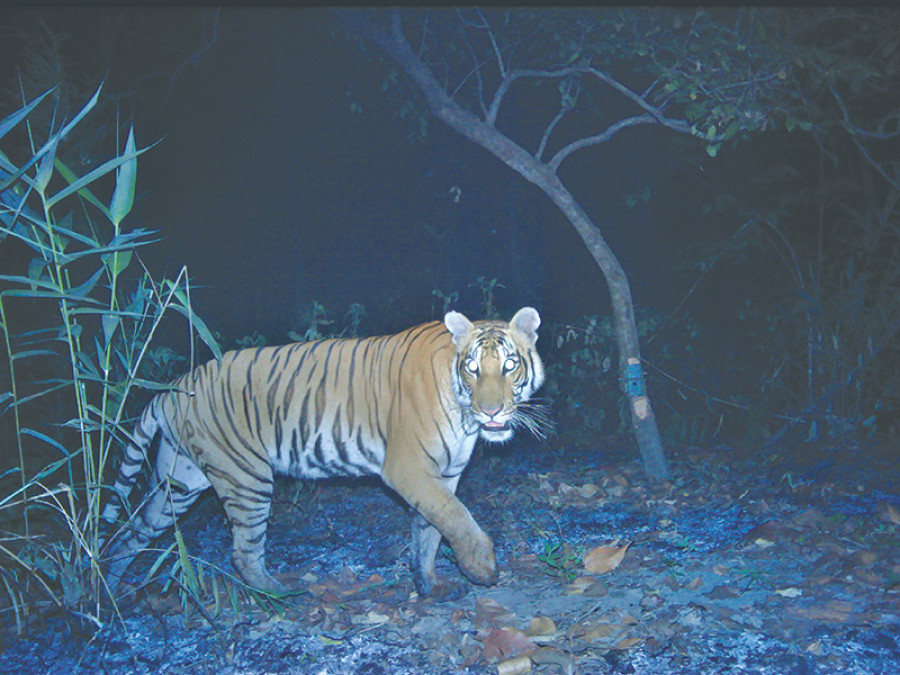National
PNP tiger population up to 19 from 7 in 4 years
Tiger population inside Parsa National Park (PNP) has registered an encouraging growth in the last four years.
Chandan Kumar Mandal
Tiger population inside Parsa National Park (PNP) has registered an encouraging growth in the last four years.
The camera-trapping census, which was conducted in two phases in 2014 and 2016, has put the tiger numbers in the country’s youngest national park at 19. The 2013 tiger census had pegged the park’s tiger population at seven.
Wildlife conservationists have lauded this growth in tiger population.
Baburam Lamichhane, wildlife research officer with the Biodiversity Conservation Center of National Trust Nature Conservation (NTNC), attributed the increase in tiger numbers to successful conservation efforts.
“Increase in number of tigers inside the park has encouraged the conservationists,” said Lamichhane.
“This progress was achieved because of favourable environment that was created for tigers inside the park.”
The latest census and study of tigers inside the PNP was jointly conducted by the Department of National Park and Wildlife Conservation (DNPWC), NTNC, and Zoological Society of London (ZSL) Nepal, with the financial assistance from ZSL Nepal and Panthera.
The study has concluded that relocation of human settlements from the core protected areas, which resulted in reduction of human activities and possible human-wildlife conflict inside the park, largely contributed to the tiger population growth.
The settlements of Rambhori Bhata and Ramauli Pratappur were relocated out of the park during 2009-2013.
Besides, dispersal of tigers from the adjacent Chitwan National Park (CNP), the largest home of tigers in Nepal, also contributed to the increase in number of tigers inside the PNP, said Lamichhane.
Breeding of tigers inside the PNP was also observed during the study.
“Movement of tigers from CNP to the neighbouring PNP was recorded in studies of 1970s and 1980s, but they couldn’t stay there for a long time, so their number
never went up,” added Lamichhane.
“Removal of human settlements, creating of tiger-friendly environment and installing of new security posts inside the park to check poaching incidents also contributed to the growth of tiger population,” he added.
Growth in prey density was another factor behind the growth in tiger population inside the park.
According to Lamichhane, the prey density inside the PNP improved from 6 per sq km in 2009 to slightly over 25 per sq km in 2013.
As a signatory to the 2010 St Petersburg Declaration on Tiger Conservation, Nepal has committed to double its tiger population to 250 or more by 2022.
The government has endorsed Tiger Conservation Action Plan for Nepal (2016-2020) to achieve the target.




 11.74°C Kathmandu
11.74°C Kathmandu















